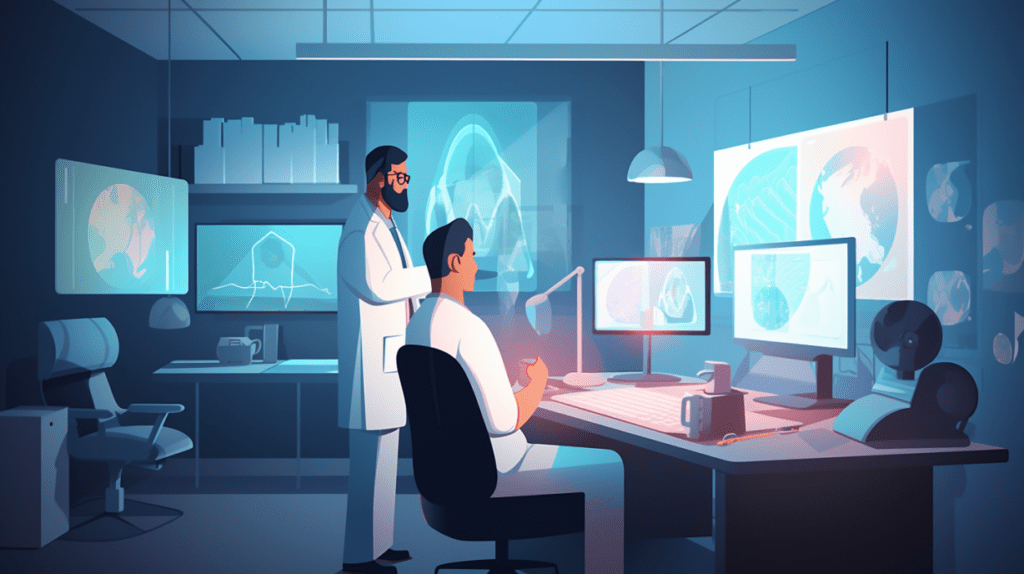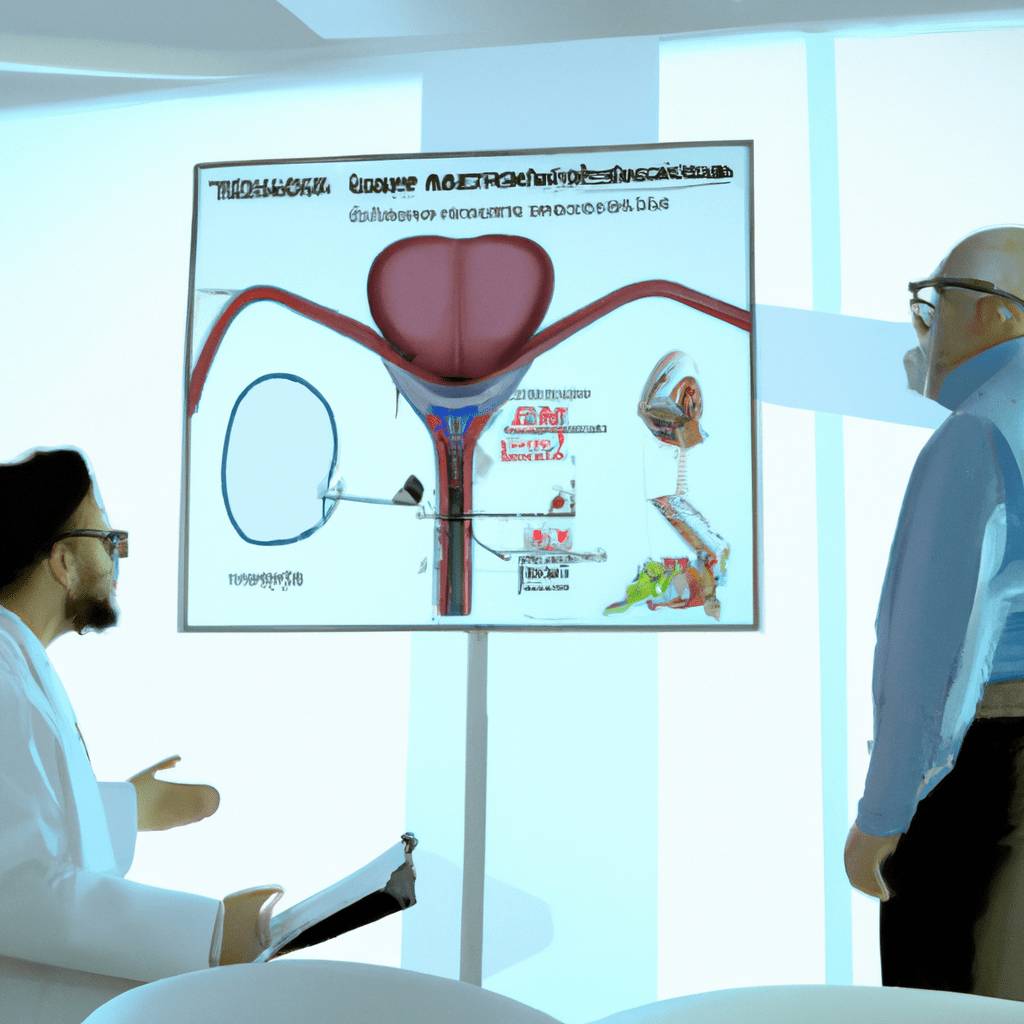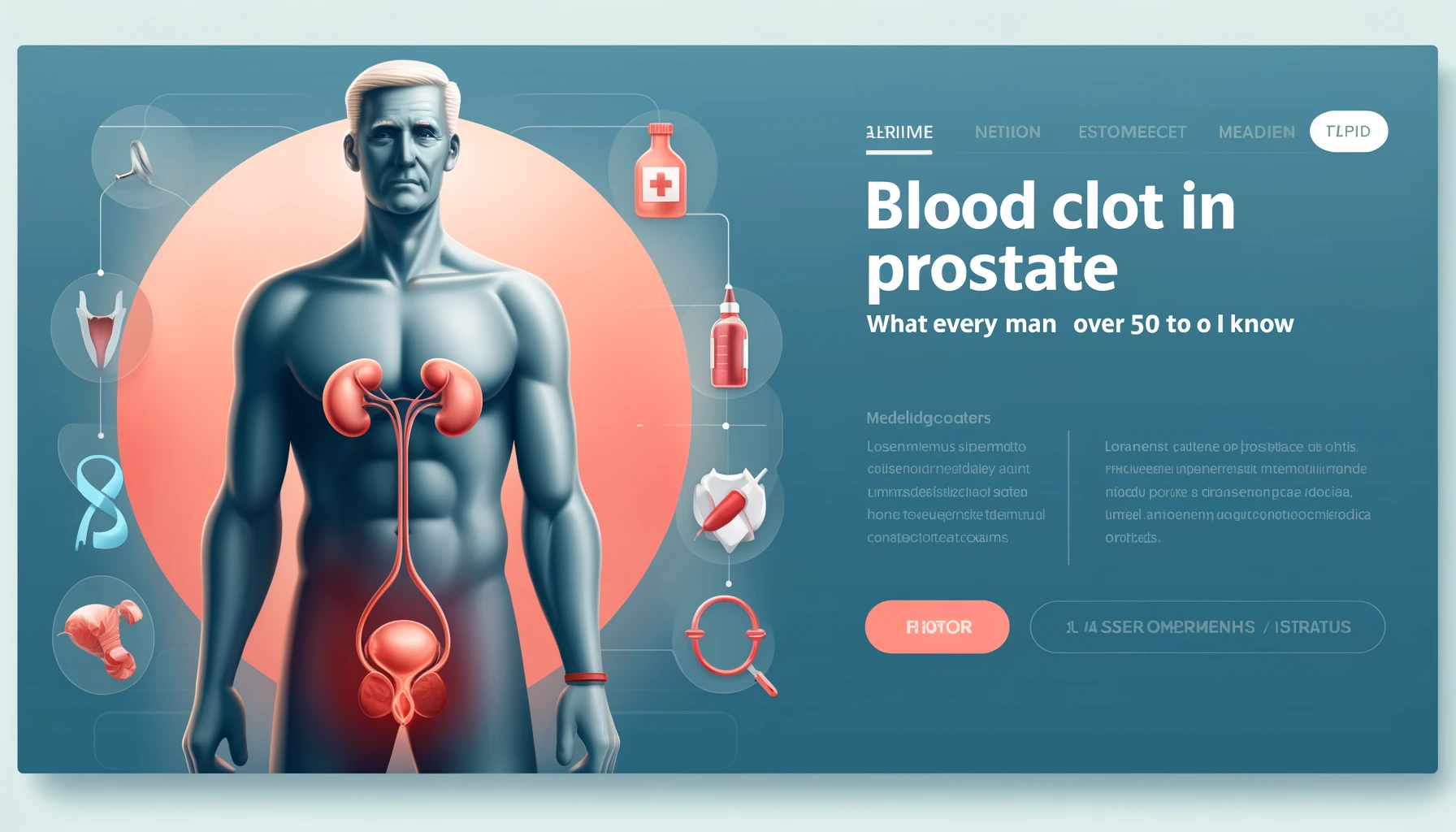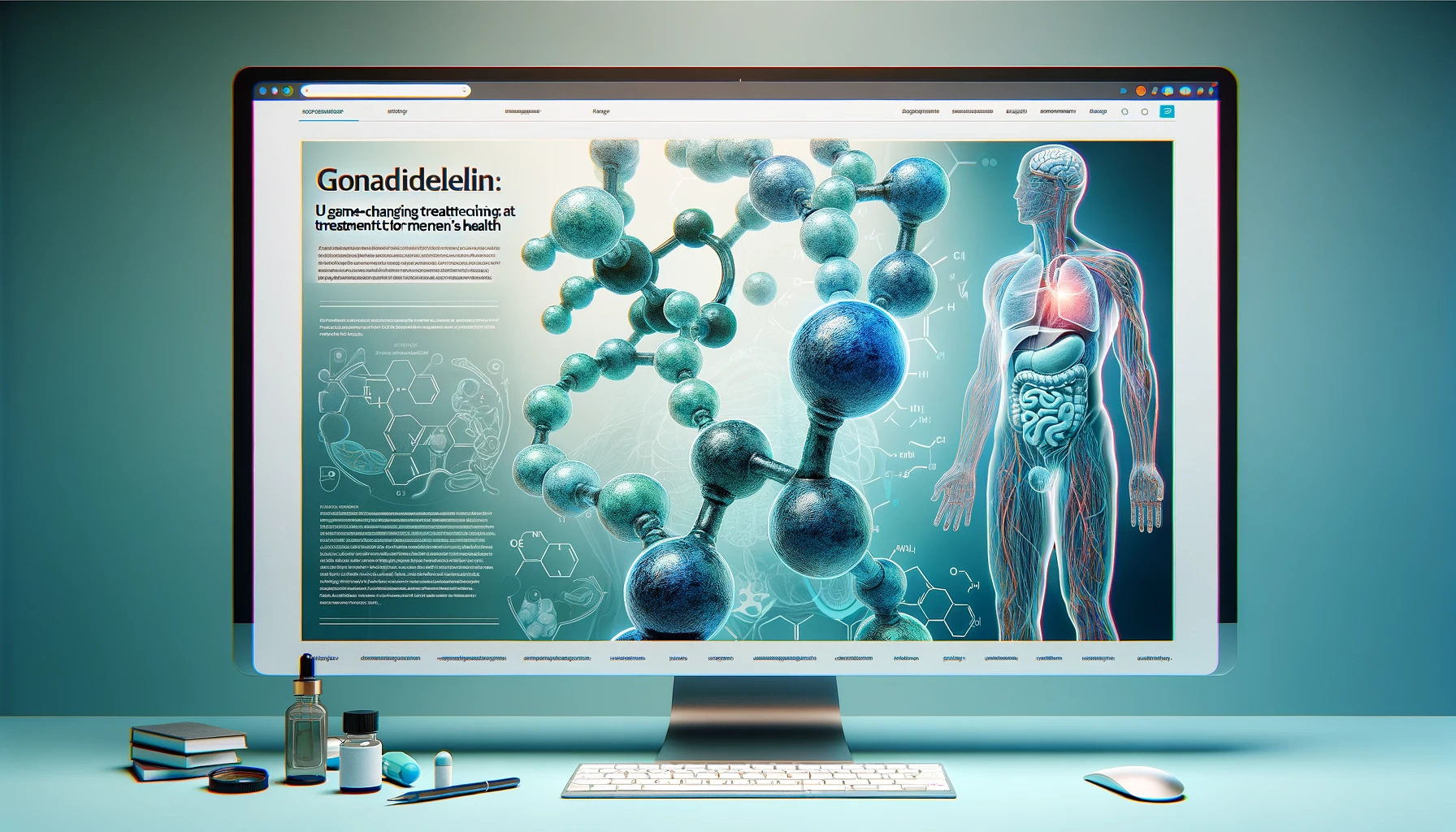The prostate is a walnut-sized gland in the male pelvis, producing seminal fluid that nourishes and transports sperm. Accessing the prostate can serve various purposes, such as medical examination, treatment, or sexual pleasure.
It is crucial to understand how to access the prostate safely and correctly and recognize the different methods and precautions involved. This guide will provide a comprehensive overview of the various ways to access the prostate, including the digital rectal exam (DRE), prostate-specific antigen (PSA) test, internal and external stimulation, and robot-assisted laparoscopic prostatectomy.
Contents
How to Access the Prostate for Medical Purposes
Accessing the prostate is crucial for medical purposes in evaluating its health, diagnosing potential issues, and monitoring treatment progress. Medical professionals use two primary methods to access the prostate for health reasons: the digital rectal exam (DRE) and the prostate-specific antigen (PSA) test.
Digital Rectal Exam
The digital rectal exam (DRE) is a procedure wherein a healthcare provider inserts a gloved, lubricated finger into the rectum to feel the prostate gland. This examination helps detect abnormalities such as bumps, problematic areas, or unusual texture, which may indicate the presence of cancer or other prostate-related issues [3]. The DRE is typically performed as a part of regular checkups for men over the age of 40 or for those who have a higher risk of developing prostate cancer.
Prostate-Specific Antigen Test
The prostate-specific antigen (PSA) test is a blood test that measures the levels of PSA, a protein produced by the prostate gland. High PSA levels can suggest the presence of cancer or other prostate-related conditions, such as benign prostatic hyperplasia (BPH) or prostatitis [3]. The PSA test, often used with the DRE, helps physicians determine the need for further diagnostic tests, such as prostate biopsy or imaging.
It is important to note that both the DRE and the PSA test are screening tools, not definitive diagnostic tests for prostate cancer. If abnormalities are detected, additional testing is required to confirm the diagnosis and determine the most appropriate course of treatment.
How to Access the Prostate for Sexual Pleasure
The prostate, often called the male G-spot or P-spot, can be pleasurable for some men when stimulated. Accessing the prostate for sexual pleasure can be achieved internally and externally, with each method providing unique sensations and experiences.
Locating the Prostate
The prostate is approximately 2 inches inside the rectum, towards the navel [6]. It can be accessed internally by inserting a finger or a device into the anus or externally through the perineum, which is the area between the testicles and the anus [4].
Internal Stimulation
To stimulate the prostate internally, a person can insert a clean, lubricated finger or a specialized prostate massager into the anus, with the finger or device pointing towards the navel. The prostate is sensitive to pressure, and gentle rubbing or stroking can result in pleasurable sensations [7]. Communicating with your partner is essential, ensuring they are comfortable and consenting to the stimulation.
When engaging in internal prostate stimulation, it is crucial to use proper hygiene, lubrication, and relaxation techniques to ensure a safe and enjoyable experience. Also, be mindful of the potential risks, such as injury to the rectum or transmission of infections.
External Stimulation
External stimulation is a non-invasive alternative to internal stimulation, suitable for those uncomfortable inserting a finger or device into the anus. External prostate stimulation can be achieved by massaging the perineum, the area between the testicles and the anus. Applying pressure and circular motions on this spot can stimulate the prostate and potentially result in orgasm for some individuals [5].
It is essential to approach prostate stimulation for sexual pleasure with an open mind, clear communication, and mutual consent. Experimenting with different techniques and positions can help you and your partner discover what works best for your unique preferences and desires.
Robot-Assisted Laparoscopic Prostatectomy
Robot-assisted laparoscopic prostatectomy (RALP) is a minimally invasive surgical procedure for removing the prostate gland in men diagnosed with prostate cancer. This advanced technique utilizes robotic technology to provide surgeons with enhanced precision, flexibility, and control during the operation, potentially resulting in better outcomes and fewer complications than traditional surgical methods [2].
The Procedure
During a robot-assisted laparoscopic prostatectomy, the surgeon makes several small incisions in the patient’s abdomen. Surgical instruments, including a camera, are attached to a mechanical device (robot) and inserted through these incisions. The surgeon then controls the robot from a console, guiding the instruments to remove the prostate gland and any affected surrounding tissue.
The high-definition 3D camera gives the surgeon a magnified view of the surgical area, allowing for increased precision and accuracy during the procedure. This technology aims to minimize damage to surrounding nerves and tissues, which can help preserve urinary and sexual function [2].
Benefits and Risks
- Some potential benefits of robot-assisted laparoscopic prostatectomy compared to traditional open surgery include the following:
- Smaller incisions, resulting in less scarring and pain
- Shorter hospital stays and faster recovery times
- Reduced blood loss and lower risk of infection
- Better preservation of urinary and sexual function [2]
However, as with any surgical procedure, there are risks involved. Some potential complications of RALP include:
- Bleeding
- Infection
- Damage to nearby organs or tissues
- Urinary incontinence
- Erectile dysfunction
It is essential to discuss the potential benefits and risks of robot-assisted laparoscopic prostatectomy with your healthcare provider to determine if it is the most suitable treatment option for your specific situation. They will consider factors such as your overall health, the stage and grade of prostate cancer, and preferences when recommending the best course of action.
Prostate Health Tips

Maintaining good prostate health is essential for men, particularly as they age. Adopting a healthy lifestyle and being proactive about prostate care can help prevent prostate-related issues and support overall well-being. Here are some tips for maintaining a healthy prostate:
Eat a balanced diet: A diet rich in fruits, vegetables, whole grains, and lean proteins can promote prostate health. Foods containing lycopene (e.g., tomatoes), omega-3 fatty acids (e.g., fatty fish), and antioxidants (e.g., berries) are particularly beneficial for the prostate [8].
Maintain a healthy weight: Obesity can increase the risk of developing prostate-related issues, such as benign prostatic hyperplasia (BPH) and prostate cancer. Regular exercise and a balanced diet can help you achieve and maintain a healthy weight.
Exercise regularly: Engaging in regular physical activity, such as walking, swimming, or strength training, can improve overall health and reduce the risk of prostate issues.
Avoid smoking: Smoking increases the risk of developing prostate cancer and other health problems. Quitting smoking can significantly improve your prostate health and overall well-being.
Limit alcohol consumption: Excessive alcohol intake can contribute to prostate issues. Limiting alcohol consumption to moderate levels (e.g., one to two drinks daily) can help support prostate health.
Stay well-hydrated: Drinking plenty of water helps flush toxins from the body and supports overall health, including prostate health.
Manage stress: Chronic stress can harm overall health, including prostate health. Engage in stress-reduction techniques such as meditation, yoga, or deep breathing exercises to help manage stress levels.
Be mindful of seated activities: Prolonged activities, such as cycling, can put pressure on the perineum (the area between the scrotum and anus) and groin, potentially leading to numbness or pinched nerves [8]. To avoid these issues, take breaks during long periods of sitting and consider using padded seats or cushions when cycling.
Get regular checkups: Men over 40 or those at higher risk for prostate cancer should have regular prostate exams, including digital rectal exams (DRE) and prostate-specific antigen (PSA) tests, as recommended by their healthcare providers [3]. Early detection and monitoring of potential issues can lead to better treatment outcomes.
Discuss symptoms with your healthcare provider: If you experience any symptoms of prostate issues, such as difficulty urinating, frequent urination, or pain during urination, consult your healthcare provider promptly. Early detection and treatment can help prevent complications and improve outcomes.
Conclusion – How to Access the Prostate
In conclusion, maintaining good prostate health is essential for men’s overall well-being. Whether you’re concerned about medical purposes, such as diagnosing or treating prostate cancer or exploring the potential for sexual pleasure through prostate stimulation, understanding the prostate’s location and functions is crucial. Regular checkups, a healthy lifestyle, and proactive care can help prevent prostate-related issues and ensure better health outcomes.
Advanced surgical techniques, like robot-assisted laparoscopic prostatectomy, can provide better outcomes and fewer complications for those undergoing prostate cancer treatment. Both internal and external stimulation methods can be utilized to access the prostate for pleasure. At the same time, medical professionals primarily use digital rectal exams (DRE) and prostate-specific antigen (PSA) tests to assess prostate health.
Remember, open communication with healthcare providers and partners and staying informed about prostate health can lead to a better understanding of this vital gland’s role in men’s health and well-being.
FAQs – How to Access the Prostate
Where is the prostate located?
The prostate is approximately 2 inches inside the rectum, towards the navel.
How can the prostate be accessed for sexual pleasure?
The prostate can be accessed for sexual pleasure through internal stimulation via the rectum or external stimulation by massaging the perineum.
What are some tips for maintaining prostate health?
Some tips for maintaining prostate health include eating a balanced diet, maintaining a healthy weight, exercising regularly, avoiding smoking, limiting alcohol consumption, staying well-hydrated, managing stress, being mindful of seated activities, and getting regular checkups.
What is a robot-assisted laparoscopic prostatectomy?
Robot-assisted laparoscopic prostatectomy is a minimally invasive surgical procedure that uses robotic technology to remove the prostate gland in men diagnosed with prostate cancer. This technique offers potential benefits such as smaller incisions, shorter recovery times, and better preservation of urinary and sexual function than traditional open surgery.
What are the primary methods for assessing prostate health?
Primary methods for assessing prostate health include digital rectal exams (DRE), where a healthcare provider inserts a gloved, lubricated finger into the rectum to feel the prostate gland for any abnormalities, and prostate-specific antigen (PSA) blood tests, which measure the level of PSA protein produced by the prostate. High PSA levels can indicate prostate issues such as inflammation, enlargement, or cancer.
Reference
1.https://www.wikihow.com/Locate-Your-Prostate
2.https://www.mayoclinic.org/diseases-conditions/prostate-cancer/diagnosis-treatment/drc-20353093
3.https://my.clevelandclinic.org/health/body/23965-prostate
4.https://www.self.com/story/prostate-massage
5.https://www.webmd.com/sex/prostate-orgasm-what-it-is
6.https://www.medicalnewstoday.com/articles/male-g-spot
7.https://www.medicalnewstoday.com/articles/prostate-milking
8.https://www.webmd.com/men/enlarged-prostate-remedies
9.https://www.medicalnewstoday.com/articles/313996
10.https://www.redorbit.com/how-to-milk-your-prostate/












